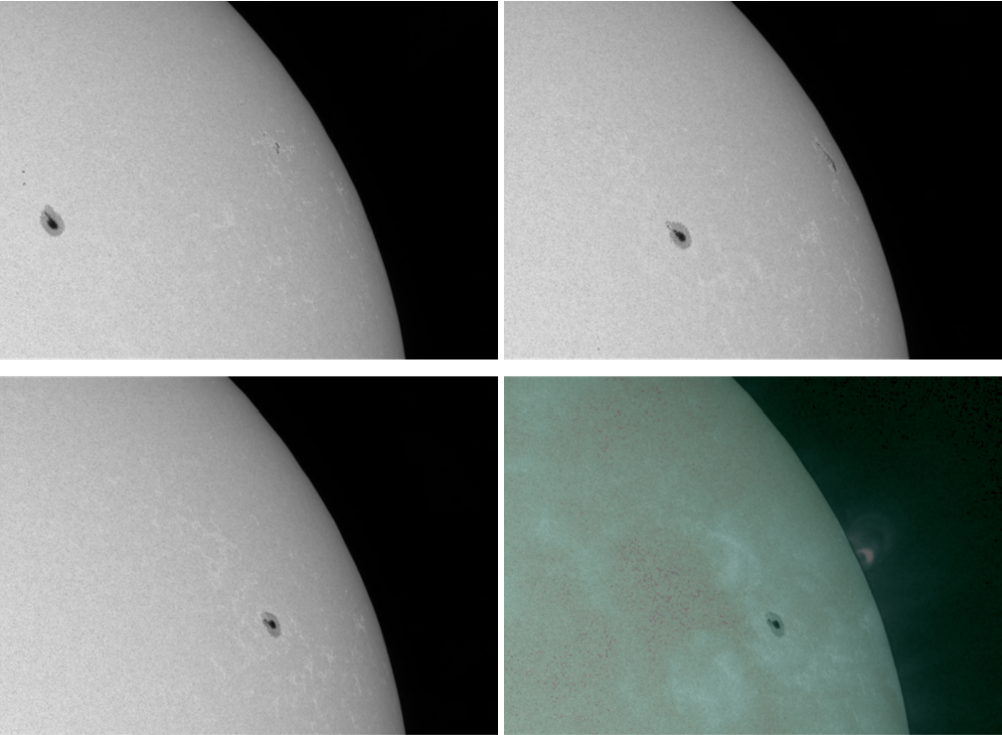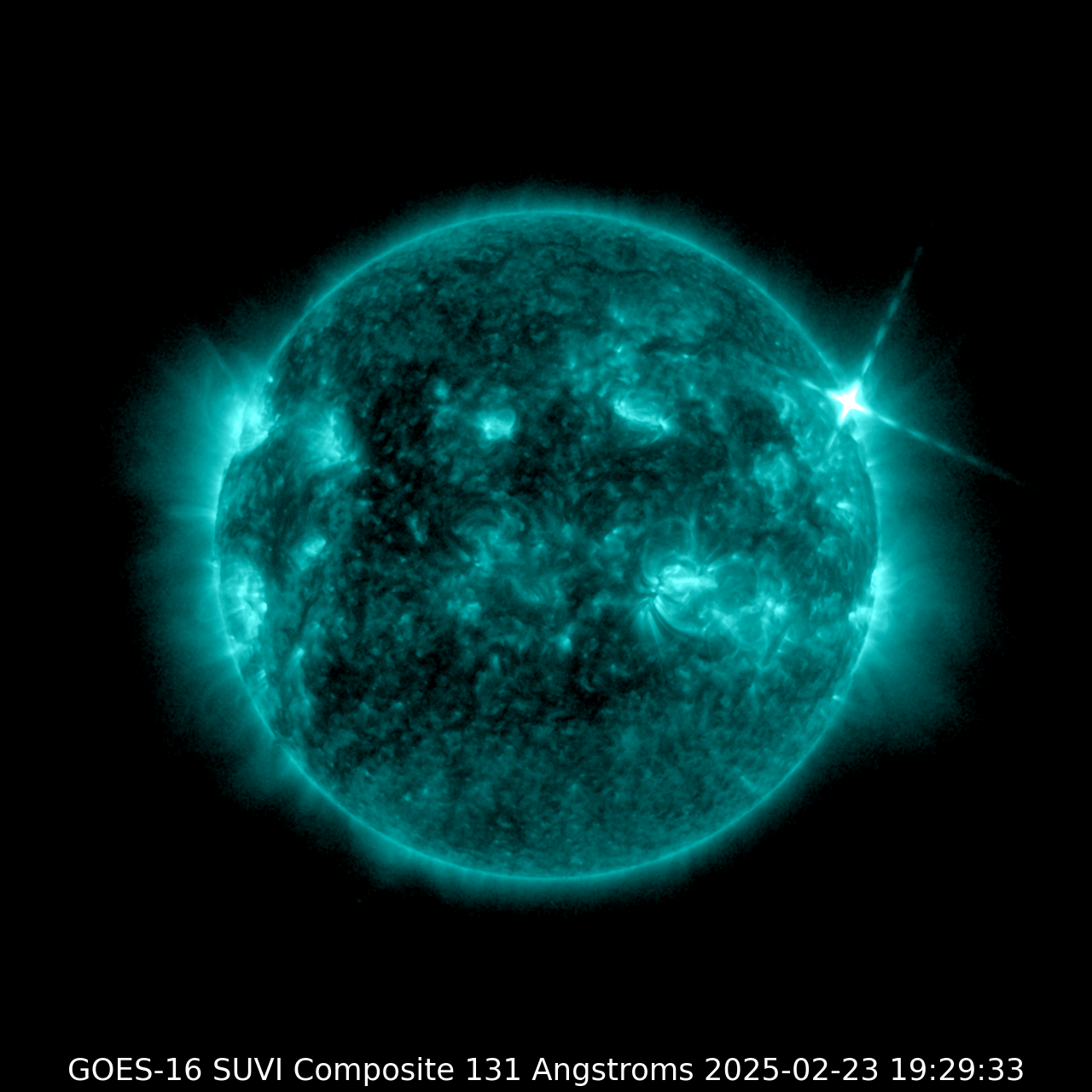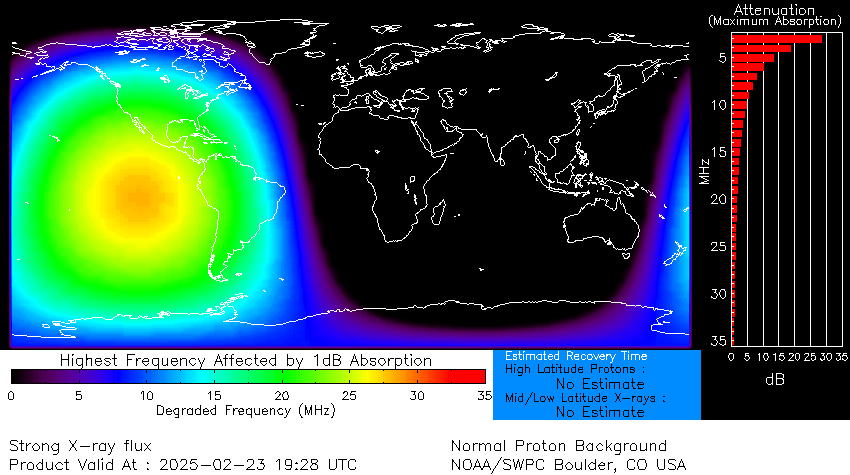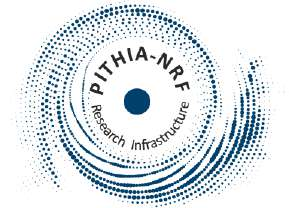NOAA 14001, which rounded the northwest solar limb earlier today, was the source of an X2.0 flare that peaked at 18:27UTC on 23 February. This active region appeared first on 21 February and rotated over the solar limb as an all-in-all relatively small region with an irregular main spot. The mosaic underneath shows a portion of the Sun's northwest quadrant in white light (SDO/HMI) on 21, 22 and 23 February with the fourth image overlaid with an extreme ultraviolet (EUV) image by GOES/SUVI 30 minutes before the flare's onset at 19:22UTC. The mosaic is followed by an EUV image by GOES/SUVI 131 near the time of the maximum. The diffraction patterns that can be seen in this image are instrumental (more information is in Note 1 of this STCE newsitem). The X2.0 flare is the strongest flare so far this year, but well behind the strongest flare so far this solar cycle (X9.0 on 3 October 2024).


The greater than 10 MeV proton flux has remained at background levels so far, well below the alert threshold of 10 pfu (GOES). There are currently no reports of a Type II radio burst in the NOAA/USAF events report, but the Owens Valley Solar Array (OVSA) nicely recorded one as can be seen in the radio spectrogram underneath (Horizontal axis: time; vertical axis: frequency, with highest values on top). A Type II burst hints that a coronal mass ejection (CME) may be associated with the eruption. However, as already pointed out by the the space weather forecaster in the SIDC's PRESTO alert, "... if there is one it is not expected to arrive to the Earth, due to the location of the source region. ...". Standing by further coronagraphic imagery to finetune this assessment. OVSA and the NOAA/USAF network recorded modest radio emission over a very broad range of frequencies including 2695 MHz, indicating that the 20UTC value of the 10.7cm radio flux may be affected by the flare's radio emission (higher than usual). Further X-class flares from NOAA 14001 are unlikely as the region rotates further onto the Sun's farside as seen from Earth.

The X-class flare affected the lower frequency portion of the High Frequency communication band (HF Com ; 3-30 MHz) mainly over the western portion of the Pacific, the USA and Latin-America. This can be seen on the D-RAP map underneath (NOAA/SWPC). An advisory to civil aviation has been issued (PECASUS).






